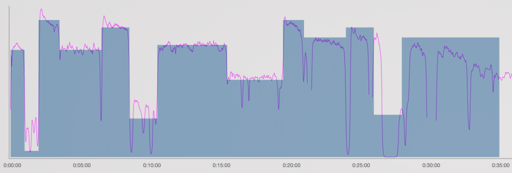How Do I Set Goals for Successful Bikepacking Races

We recently had a workshop on goal setting for our training group and I thought it might be useful to write an article to explain the details of how goal setting can support a successful finish in a bike packing event or any other sporting event.
So, how can goal setting help you succeed in a bike packing race? There are three types of goals used in sport: Outcome Goals, your dreams; Performance Goals, measurable things; and Process Goals, things you do. These goals integrate into a plan for both training and your event that if followed effectively should lead bring success. The process is simple:
- What is your dream? This is your Outcome Goal but it may not be totally in your control, so
- Create a Performance Goal that you can control from your Outcome Goal, this is something you can define and work towards and if you achieve the performance you are likely to realise your dream;
- Break the Performance Goal into smaller pieces that for stepping stones towards your ultimate goal;
- Create Process Goals, things you have to do to achieve each of the stepping stones along your journey to success;
- Keep reviewing all your goals and change anything that isn’t working for you
- If you follow the process, you should reach your goal.
This describes the process but probably needs some more detail to see how to make it work.
You can watch a shorter version I made for YouTube by clicking the video if you like.
Outcome Goals

Outcome goals are your dreams, what you really want to achieve. These are the things that motivate us and keep us going, exciting our emotions and imagination.
One of the people I work with recently shared a Tweet from StephenSeiler, which describes goal setting really nicely: https://twitter.com/StephenSeiler/status/1338075968720822272, which in turn was a retweet but is very relevant:
“When making plans, think big. When making progress, think small.”
Examples could be to win an event, finish in the first 5 in your category or break a World Record. The first athlete I coached with wanted to go to the London Paralympics and take part in the handcycling events.
As you can see, these things aren’t totally controllable. If your goal is to win an event and someone performs better than you, you won’t win, even though you might have had an amazing performance that was better than you could have imagined.
Outcome Goals:
- Have elements we can’t control, therefore
- Success or failure is outside our control to some degree
- Aren’t easy to define with hard data, apart from in some circumstances
This also has a flip side, in that you might win your event but decide that the faster people didn’t turn up, so it wasn’t the successful dream you had imagined.
You can probably see that these situations can lead to disappointment and a feeling of failure, even though you might have done really well and even performed much better than you expected. For this reason, it is better to define success or failure against things called Performance Goals that are defined with hard data and are more within our control.
Performance Goals
Performance Goals are things that we can define with hard data and also things that we can take control of, they are independent of how other people perform. For that reason, Performance Goals make better criteria for deciding whether we have performed to our hopes and expectations. We will still be stirred up by emotion if we fail to hit our Dream Outcome Goal but at least we will know we performed according to our goals.
Performance Goals are designed to give the most likelihood of meeting our Outcome Goals. For example, if you want to finish in the top 5 in your age group you can look at previous results of your event and other similar events to make an estimate of how fast you need to ride to meet your goal, you then have a Performance Goal.
This Performance goal also gives you a way of defining what you need to do to meet your goal. For example, you can define how far you need to ride each day and build your fitness accordingly.
Some Outcome Goals are Performance Goals. For example, if you want to finish your event within a given time, this is a Performance Goal to use in developing your training and as a criterion for success or failure.
Performance Goals have two functions, as I have alluded to earlier.
- Performance Goals provide measurable criteria and therefore form objective measures of success; and
- They can be clearly defined with hard data and therefore can form the basis of a training and racing plan for your event.
Performance Goals as Stepping Stones
The next step is to break your overall Performance Goal into smaller goals that can form stepping stones towards your ultimate goal. For example, if you have worked out that you have to ride the distance of your event in a given time, you know you must be able to ride a given distance in one day. If you can’t ride the daily distance in one day, that may be your first Performance Stepping Stone.
These are the things that form the second part of the Tweet I mentioned at the start,
“…., when making progress, think small”.
Another goal you will want to include is being able to ride for two or three days to your ride schedule. It is best to ride to a time schedule even if you have distance goals because it is more resilient and within your control. If something goes wrong and you can’t make your distance for a given day you are immediately off track but if you have a time schedule you just get back into the routine. You set the time schedule like you do the performance goals and use it in your training. If you need to ride 300km/day for example and can manage a schedule of 14 hours/day riding, you can easily see that you need to be able to ride at least 300km in 14 hours sustainably and need to train for that.
Build in some contingency for when things go wrong because things never go exactly to plan.
Use these stepping stones to create a time line, whereby you work towards a stepping stone for 4 to 6 weeks and then build on that in the next period to move towards your ultimate goals.
In this way you can plan a route towards your event along with things you can measure, your Performance Stepping Stone Goals, to see whether you are on track.
If you are on track, that is perfect, if not, you need to revise your goals and get back on track.
Below is an example showing how I broke up an event to create a plan for someone I work with. You can imagine the blue shaded areas as goals for how fast you have to go on certain days and the pink line as how fast you are currently able to go. By training for each section you can build your fitness towards your goals.
You can see that in this test, which is actually a short time trial, the athlete couldn’t meet the event goals. Hopefully you can see how breaking things down like this is relevant to your event.

Process Goals – what you do
Process Goals are what you do to develop your fitness towards each Performance Stepping Stone Goal and ultimately your main Performance and hopefully your Outcome Goal.
Process Goals include both training and things that support your training like getting enough rest and leading a healthy lifestyle. These support activities are vitally important and if you look at professional athletes you can learn that they are very good at having a good routine that supports their training. Whilst I realise that not everyone has the luxury of completely dedicating their time to their sporting goals, working within your life commitments to support your goals will make a huge difference to how well you ultimately perform.
Here are some examples of Process Goals:
- Train for at least 5 days each week including 1 gym/strength session and one long workout;
- Include at least one interval session each week that supports the Performance Stepping Stone for the current period of training;
- Practice mental skills and/or mindfulness at least 3 times each week;
- Eat well, meet calorie and macronutrient goals and have a recovery drink or snack after hard or long workouts;
- Measure resting heart rate and heart rate variability (HRV) on waking each morning and record some subjective metrics on how you feel each day.
These are just examples but you can see that doing these things consistently is likely to help you progress towards your goals and stay healthy.
Process Goals during your event
If you have planned correctly, you should be focusing on following your riding routine and processes during your event and not concerning yourself too much with performances. If you follow your plan, you should have a successful outcome.
As you can see, it is therefore important to set Process Goals for your event, such as ride for so many hours each day, eat properly, resupply according to plan and eat effectively.
Spending time workout out what you need to do during the event and going through things that might go wrong is essential to success. Create contingencies as to what you will do if things go wrong, so that you are prepared and able to get back into your routine as quickly as possible.
I hope this has all made sense and shows you how you can use goals to help you define and execute a plan for success towards your Dream Goal.

Here is a summary of the Goal Setting process:
- Dream Goal = Outcome Goal
- Transform your Outcome Goal into a Performance Goal
- Create smaller Performance Stepping Stone Goals to guide your training and measure progress
- Define Process Goals that are what you need to do to achieve each Stepping Stone
- Complete your Process Goals and you should succeed in your Performance Goal and hopefully your Dream Outcome
Remember to keep reviewing and testing to make sure you stay on track. When things drift a little, decide whether you need to replan or just make small changes to get back on track.
I hope you found this article useful. Please let us know and also let us know if we can help in any way as you progress towards your dream.
Related Questions
Can I have more that one Outcome Goal? Yes, it is a good idea to have more than one Outcome Goal. For example having a big dream goal that really motivates you is important but it is also good to think about what you are hoping to achieve by aiming for your big dream and make this another goal. If you happen not to manage one of your goals, you may hit one of the others and that is a brilliant cause for celebration and a basis for learning.
What is the best way to track my progress towards my goals? One of the best ways to track progress is to use and on-line training diary like TrainingPeaks, Strava or Final Surge. Some of these tools require a subscription but others have free options, so have a look and see what might work best for you. I did a review of options for cycling training that might interest you, click this link to have a look.
January 18, 2021

Comments